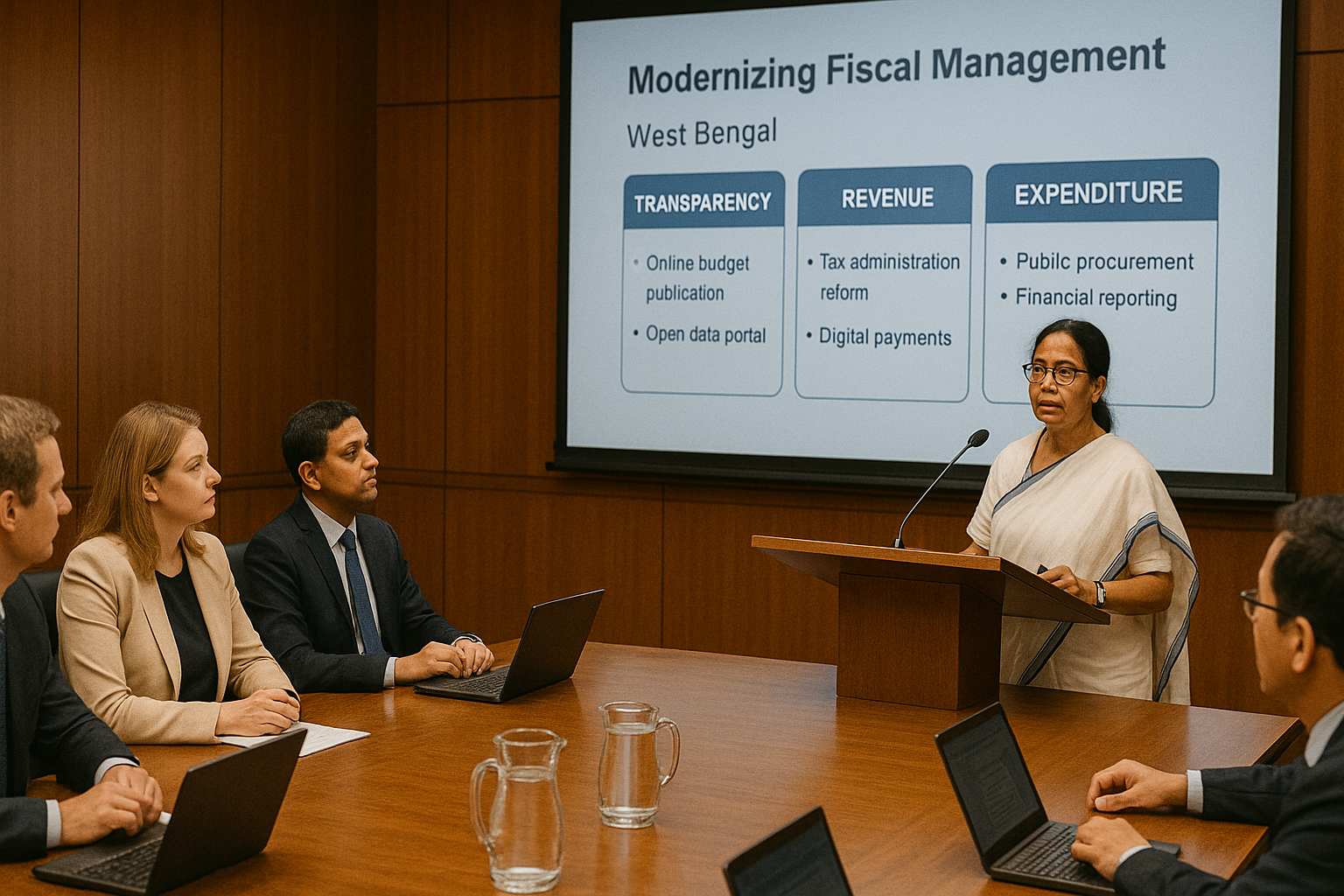Reinventing Governance: How West Bengal Modernized Its Public Financial Systems
West Bengal’s Public Financial Management reforms, led by NIPFP and CGG with World Bank and ADB support, transformed the state’s fiscal system through digital innovation, transparency, and accountability. The reforms modernized budgeting, treasury, and audit processes, making West Bengal a model of efficient, technology-driven governance in India.

The report on Public Financial Management (PFM) Reforms in West Bengal, jointly prepared by the National Institute of Public Finance and Policy (NIPFP) and the Centre for Good Governance (CGG), chronicles how the state transformed its fiscal management through technology, institutional reform, and evidence-based policymaking. Supported by the World Bank and the Asian Development Bank (ADB), the study highlights how West Bengal's Finance Department modernized its financial systems to restore fiscal discipline, strengthen accountability, and align public administration with global best practices. These reforms marked a decisive break from the legacy of manual bookkeeping, delays, and fragmented decision-making that had long constrained efficient governance.
From Deficits to Discipline
At the turn of the millennium, West Bengal faced mounting fiscal stress, rising deficits, ballooning debt, and inefficient expenditure management. The government responded with an ambitious reform agenda that sought to modernize every layer of fiscal governance. The cornerstone was the Medium-Term Fiscal Policy Framework (MTFP), which linked annual budgets to multi-year expenditure projections. This move replaced ad hoc budget-making with a strategic, long-term outlook. Departments began preparing outcome-based budgets that focused on measurable results rather than mere allocations, ensuring that every rupee spent translated into developmental impact.
The Digital Revolution in Treasury Management
The most transformative leap came with the introduction of the Integrated Financial Management System (IFMS), which connected all state treasuries through a single digital platform. The IFMS automates receipts, payments, and accounting processes, eliminating manual interventions and cutting delays in fund transfers. By shifting to e-payments, the government ensured transparency, accuracy, and real-time traceability of transactions. The system allowed decision-makers to monitor financial operations at any time, significantly reducing opportunities for leakages or misappropriations. This digital overhaul not only improved cash management but also enhanced citizens' trust in government financial systems.
Building Accountability and Strengthening Audit Systems
Modernizing financial management went hand in hand with improving accountability. The state adopted accounting standards recommended by the Government Accounting Standards Advisory Board (GASAB), ensuring consistency and credibility in financial reporting. Real-time dashboards and digital audit trails enabled greater transparency, while the shift to risk-based internal audits helped focus oversight on high-risk areas. The creation of a Debt Management Cell further strengthened fiscal responsibility by tracking borrowings and contingent liabilities. The implementation of the Fiscal Responsibility and Budget Management (FRBM) Act formalized deficit and debt targets, reinforcing fiscal discipline across departments. Together, these measures created a robust ecosystem for evidence-driven financial oversight and debt sustainability.
Empowering Local Governments through Digital Inclusion
Recognizing that effective governance must reach beyond the state capital, West Bengal extended its PFM reforms to local governments. Through e-Gramin accounting systems and online fund-tracking tools, rural and urban local bodies gained greater autonomy in managing finances while remaining accountable to the state. Funds could now flow directly to panchayats and municipalities with minimal delay, ensuring the timely implementation of development schemes. This decentralization also fostered community participation in fiscal monitoring, strengthening local democracy. Training programs conducted with the Institute of Public Auditors of India (IPAI) and Administrative Training Institutes helped local officials adapt to digital tools and new financial standards, embedding a culture of accountability from the grassroots upward.
Transformative Impact and Enduring Lessons
The impact of West Bengal's PFM reforms has been profound. Fiscal transparency improved dramatically as digital systems made real-time financial data accessible to policymakers and auditors. Payment processing times shrank, predictability of fund flows increased, and reporting accuracy improved. The reforms fostered efficiency, transparency, and credibility, attributes that have elevated West Bengal's reputation as a leader in fiscal innovation among Indian states. Yet, the journey was not without obstacles. Integrating legacy systems, overcoming resistance to change, and building capacity at the local level demanded persistent effort. The experience reaffirmed that while technology is a powerful enabler, sustained institutional commitment and political will are the real drivers of reform.
Today, West Bengal's experience stands as a benchmark for subnational fiscal transformation in India. The state's embrace of digital governance, coupled with disciplined fiscal management and capacity development, illustrates how structured reform can convert financial administration into a cornerstone of good governance. The PFM reforms have not only strengthened the state's fiscal foundations but also redefined how public money is managed, monitored, and delivered for the benefit of its citizens.
- FIRST PUBLISHED IN:
- Devdiscourse
ALSO READ
-
World Bank’s 2024 Liberia Economic Update Urges Shift Toward Inclusive Jobs
-
World Bank’s 2024 Liberia Economic Update Urges Shift Toward Inclusive Jobs
-
World Bank Report Highlights Resilience, Risks, and Reform in Pakistan’s Economy
-
World Bank Backs Kerala's Health Revolution with $400M Boost
-
World Bank Boosts Kerala Health with $280M Loan









